 | E-mail to Birds Korea |
 | KWBS |
in the Region
 | The Oriental Bird Club |
 | BirdLife International (Asia) |
February
Cold winters mean both temperatures and birding are similar to January, while increasingly frequent mild winters are marked by brief spells of rain or sleet, often followed by warmer sunshine, with maximum temperatures rising to 15°C or more in the southeast.
Many wildfowl are on the move by mid-month: Tundra Beans, Greater White-fronted and usually Swan Geese can be found at the Han-Imjin. Most Baikal Teal start to depart and by month’s end can become difficult to find in southern locations. Rooks and Daurian Jackdaws begin to move back into the Nakdong valley and near Gunsan. February sees the start of crane migration, with Hooded and White-napeds moving into South Korea from Japan. The now very scarce Relict and the rather more widespread Saunders’s Gull peak at several tidal-flat sites. At the end of the month the first spring migrants, such as Far Eastern Curlews, Hoopoes and Japanese Lesser Sparrowhawks start to arrive.
February highlights in recent years have included records of Baer’s Pochard, Steppe Eagle, Least Auklet, Snow Bunting, and Common Redpoll.
Outstanding national rarities in February include the second record of Green-winged Teal in 2008, and the second Arctic Redpoll, on Heuksan Island in 2009. Recent Korean firsts in February include Thick-billed Murre in 2006 and Himalayan Vulture in 2007.
(The following records are a compilation of our own sightings and records sent in by other observers. As well as being posted on the Birds Korea website(s), selected records are also forwarded to other Korean-language birding websites; records of threatened species are arranged and forwarded to Birdlife International and national authorities when appropriate; flag images and records are passed to bodies responsible for their coordination throughout the flyway; and all records sent to us are used to compile annual reports and to support the evolving understanding of the status of many of Korea’s birds.)
Igidae, Busan, February 25
In mild, spring-like weather (with a high of 12C) an excellent afternoon of local birding and the first hints of northward landbird migration. The first species of note was a single Eurasian Hoopoe feeding in a belt of pine and open grass among apartment blocks near the Birds Korea office. As this area has been visited several times during the winter, this is presumably a new-in spring migrant rather than an overwintering bird. Also present in apparently increased numbers were singing Coal Tit and several small groups of Goldcrest.
Along the harbour-front and hill-ridge, two Black Kite (one eating an unidentified fish in flight), two Eastern Buzzard and a Northern Goshawk were all of interest, while in the main park itself, at least 10 Eurasian Bullfinch were still present. These included several obvious rosacea males and one much greyer “griseiventris type”, with some hint of pink admixed in the central breast (and thus presumed to be a rosacea x griseiventris intergrade).
Near SK View, along the edge of open ground, single personata Black-faced Bunting, three Siberian Accentor, the long-staying Long-tailed Shrike still, and in one patch of cut grass a mixed feeding flock containing 6+ Grey-capped Greenfinch, 10 Yellow-throated Bunting and 150+ Vinous-throated Parrotbill – the latter species unusually feeding out in the open on the ground in two large nervous flocks, either side of the main path. The sea was much quieter than in recent weeks (with the Pacific Loon flock and alcids nowhere to be seen), with most notable instead being single Red-throated Loon and Northern Shoveler.
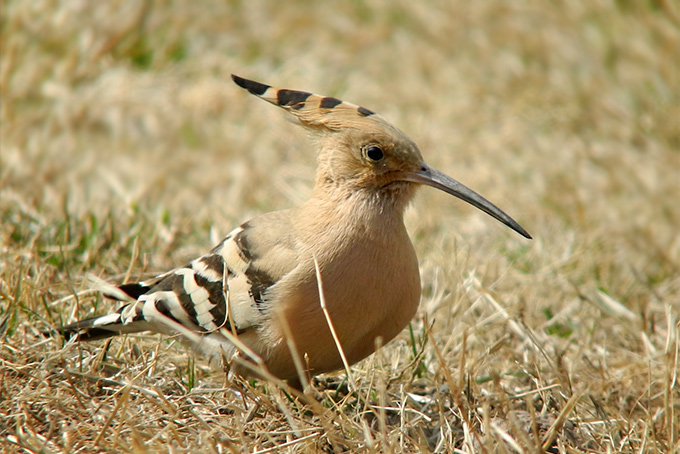
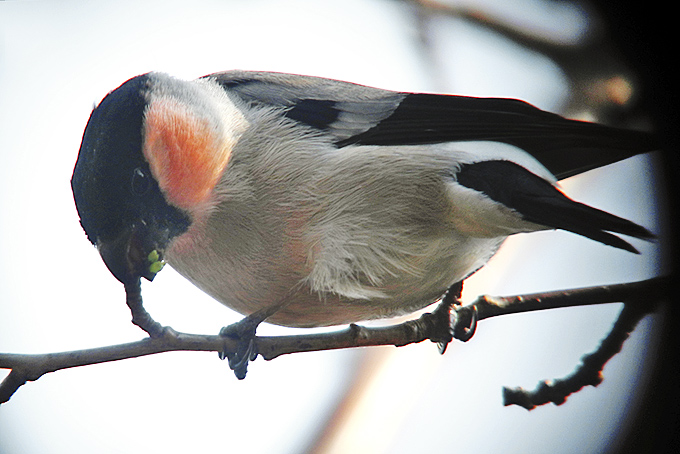
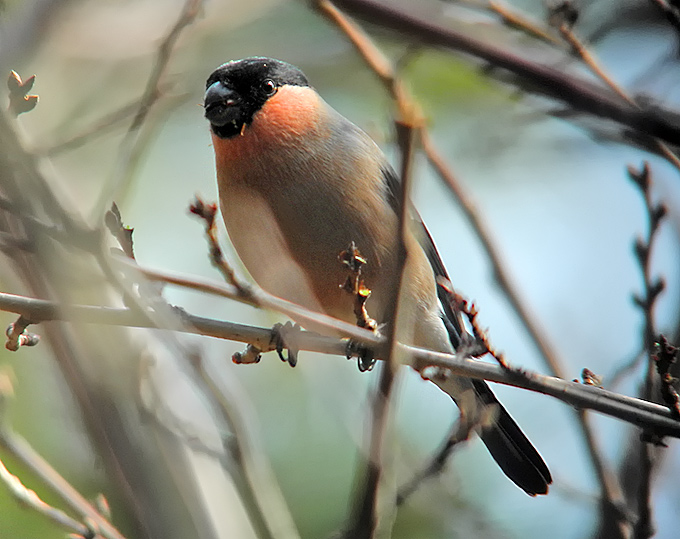
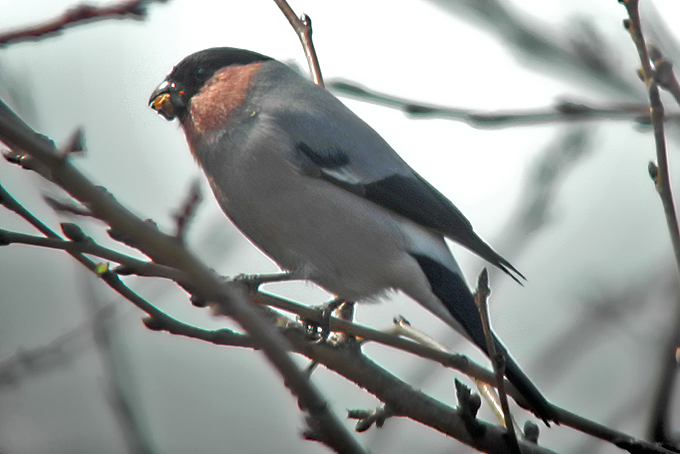
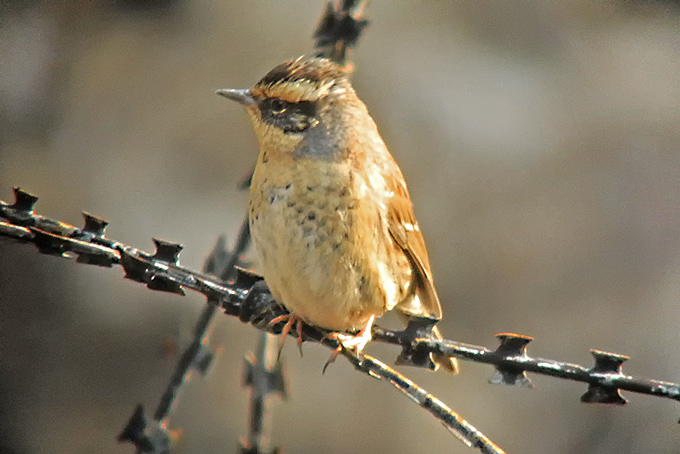
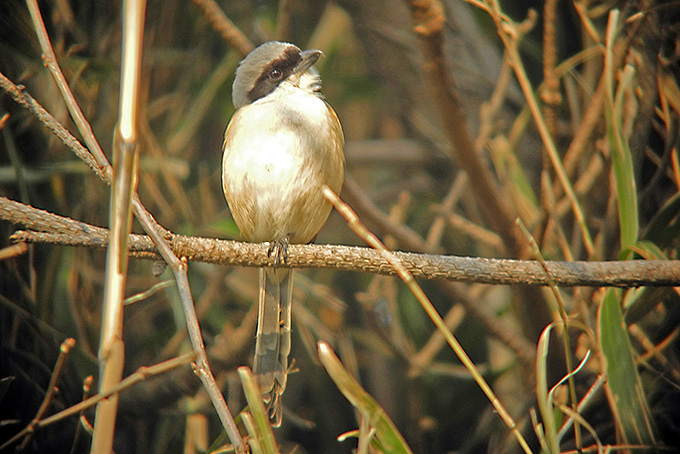
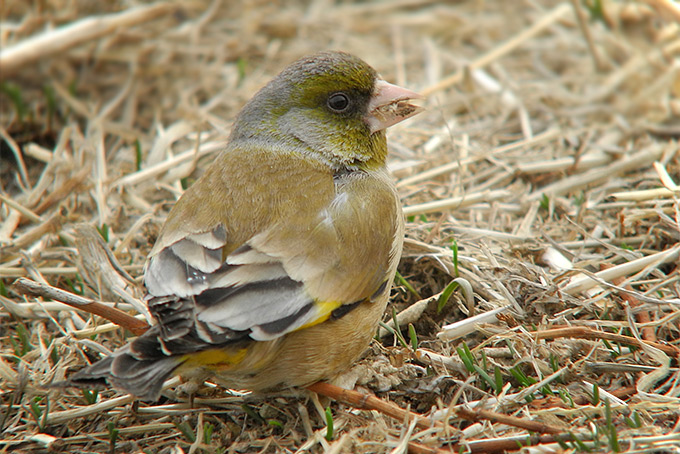
Guryongpo and Angang, February 16
In milder (min -2C/ max 6C), sunny conditions with only light winds (mostly W2, though occasionally up to Beaufort 3-4) some gulling at Guryongpo followed by some later afternoon birding close to Angang.
In the main harbour at Guyryongpo, along with very approximately 2,000 Black-headed, 200 Vega, 50 Black-tailed, 30 Taimyr, 20 Slaty-backed, 10 Common and 5 Mongolian Gulls and a single First-winter Black-legged Kittiwake, first bird of special note was a longish-billed adult Iceland Gull (seen only at long range- with no reason to suspect it to be different from the bird seen last month 15km or so to the north). This was followed soon after by an interesting adult gull seen within a group of Taimyr Gulls. Initially, ID was proposed (by NM) as a biggish-looking “eastern” Caspian – on the basis of its long-winged look, its long-bill and odd-shaped head, its beady eye (pale with some dark flecks), mid-grey saddle coloration (at different angles, consistently and obviously paler than taimyrensis, and one or two tones paler-looking than vegae, even in bright light), lack of any head-streaking, and grey-flesh toned legs. However, the bill depth, fuller-looking nape and especially the pattern on the underside of P10 seem a rather better match for a small-bodied adult Mongolian Gull – the default ID of most such white-headed gulls in this part of the world. Nonetheless, it was puzzling individual, and out of the range of what is usually expected of mongolicus here in the ROK. Identification of this bird seemed further complicated by the presence of a Slaty-backed Gull with some hybrid influence (most obvious in flight) and a presumed Taimyr Gull which also appeared long-billed and seemed to show more white in the outer primaries than might be usually expected (on the left of image captioned “Challenges of Gull ID)…
Further up the peninsula, happily much less challenging to ID were two Brant Goose (with the same or two more seen feeding further to the southwest), a dozen or so more Black-legged Kittiwake, several hundred Ancient Murrelet and probably c. 100 Rhinocerous Auklet in total.
At Angang, no Greater White-fronted Geese on the reservoir until after sun-down (when >1000 arrived), with best there several Eastern Buzzard, a Rough-legged Buzzard at least two Eurasian Eagle Owl and a suspected vulpinus Steppe Buzzard. This latter bird was ‘scoped at long range (soaring with upswept wings) for several minutes before it flew past us to roost in woodland. Although it looked long-winged, pale-headed and pale-tailed and showed strong white patches on the upperside of the primary bases (all briefly suggesting Upland), it otherwise looked small and its plumage was warm-toned. It had almost solidly-dark underparts below a narrow paler breast band, and extensive white on the underside of the black-tipped primaries with a striking white-looking or whitish stripe across the underwing offset only by dark carpal patches and underwing coverts and a dark trailing edge. Its tail was pale, grey-buff-orange toned at the base, with a clean-cut dark grey sub-terminal band. If some recent postings to listservers are correct, then vulpinus might not be so exceptional in Far East Asia. However, the inclusion of Steppe Buzzard Buteo buteo vulpinus within Common Buzzard by the IOC Checklist means we are in urgent need of much better East Asian-centric ID criteria…
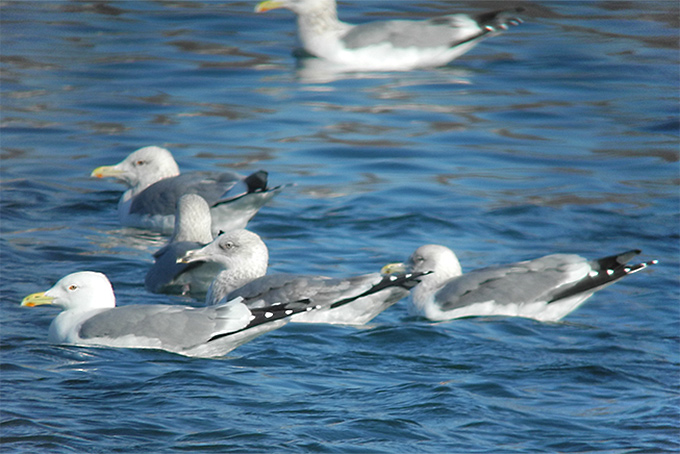
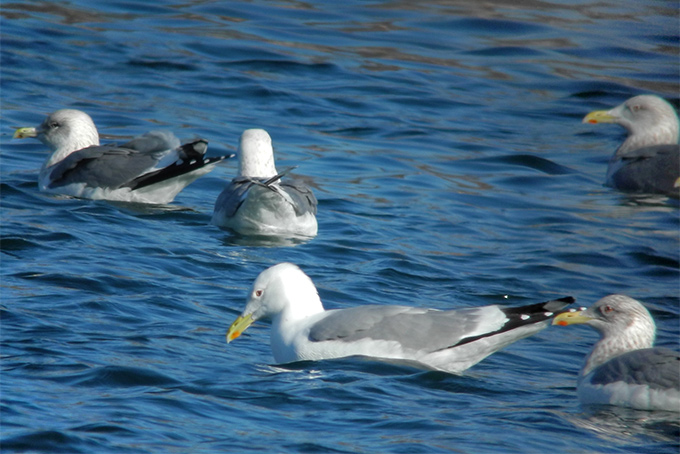
(and one hybrid Slaty-backed), Photo © Nial Moores
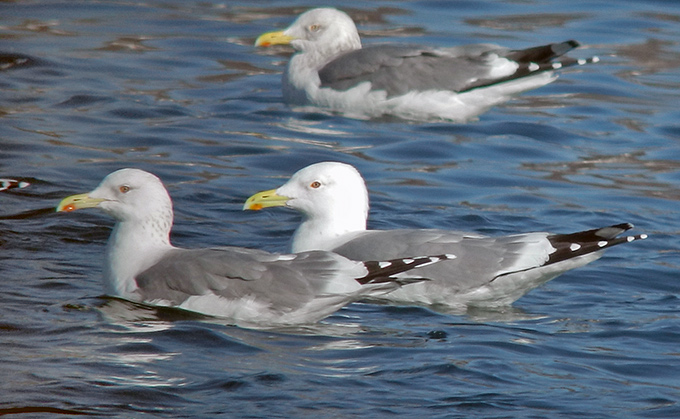
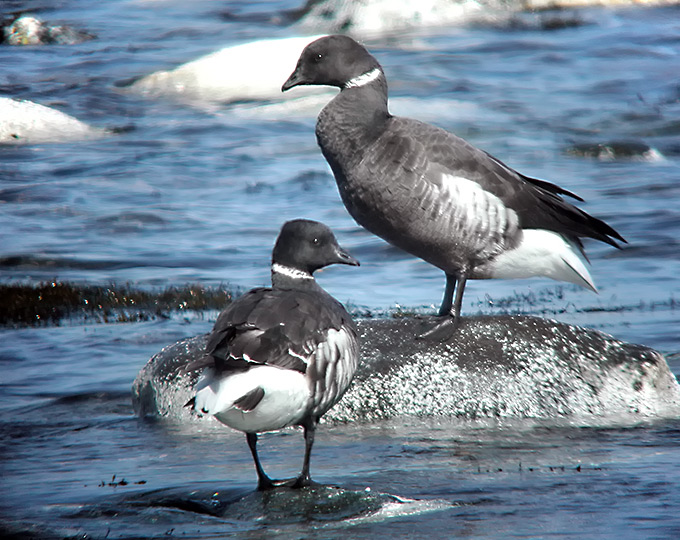
Northeast Coast, February 16
At Gosong-Gun we had interesting although somewhat distant views of the juvenile Bearded Vulture, which showed itself remarkably aerobatic for such an outsized raptor, switching back and forth and plunging into a near-vertical dive to elude the harrasment of two White-tailed Eagle. Sunning themselves on a nearby peak within the prohibited civilian control zone were some 20 or so Cinereous Vulture.
Also in the vicinity for example were two rosaceae Bullfinch, some Long-tailed Rosefinch, flocks of Grey-capped Greenfinch and Azure-winged Magpie, an Upland Buzzard, 2 Eurasian Kestrel and an Eastern Buzzard.
At Sokcho, the long-staying Bufflehead still, with 70-80 Greater Scaup and a presumed Caspian Gull. Alone on a sandbar, this striking individual showed a pure white head inset with small dark eye and long, gradually sloping forehead, with relatively heavy bill and light pinkiish legs. Unfortuntely no images could be taken, but viewed through binoculars for only a couple of minutes before flying it also showed the distinctive wingspread with almost all-white primary tips.
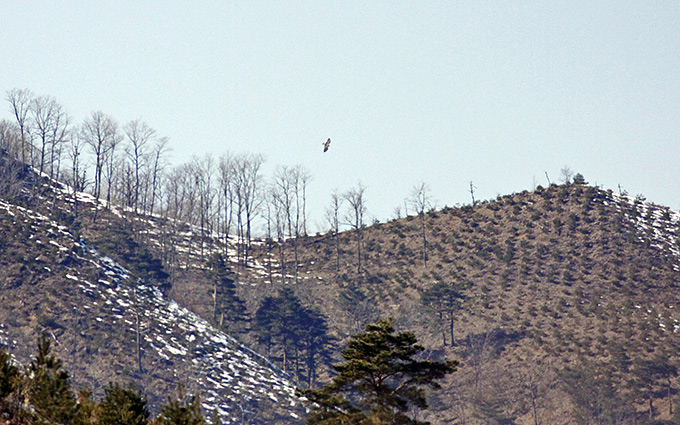
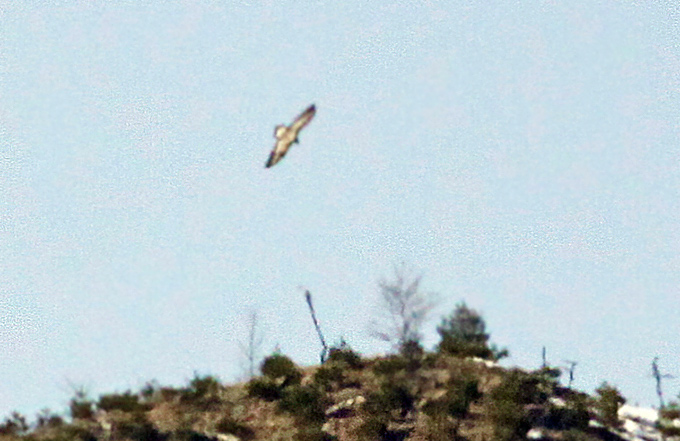
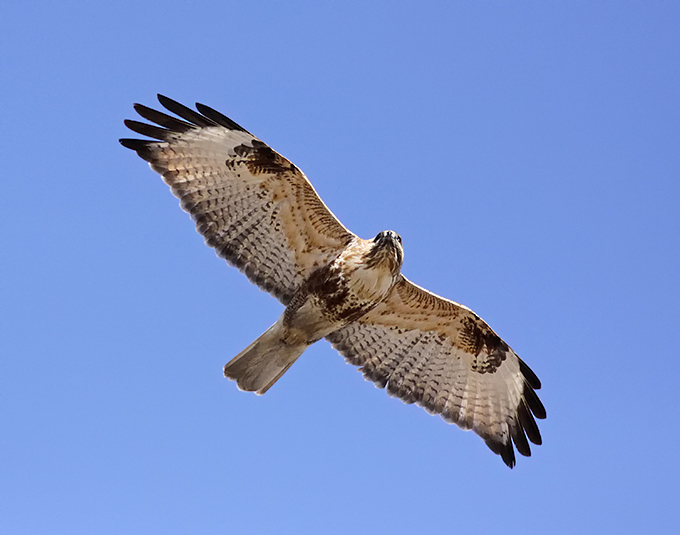
Usop Swamp (Naju), February 15
The Usop swamp was layed out about 300 years ago. The information board also tells that it is about 30ha in size and now the Usop Swamp Ecological Park that in July and August is covered with blooming red lotus. The main park components as far as I could see are a walking path around most of the swamp, two board walks, one along one side of the swamp that continues with the normal walking path and one heading into the lake from there. Also a small parking lot at the main road with a little toilet facility beside a resting place with the information board belongs to it.
Unfortunately the board walks a open without any cover, so any movment creates large disturbance for birds close to them. The swamp itself has large areas of water with lotus plants in it and some islands with reed, which also surrounds most of the swamp.
Bird wise it was a very surprising visit in the sunny but also cold and windy late morning. Close to the parking lot some Mallard, Eurasian Teal and Eurasian Coot. On the first board walk about 15 White Wagtail were chasing each other. The surprise for this swamp were more than 100 Whooper Swan and about 2000 Taiga Bean Geese. Also seen were 4 Eastern Great Egret, 2 Grey Heron, a Northern Shoveler pair and a single Eurasian Spoonbill.
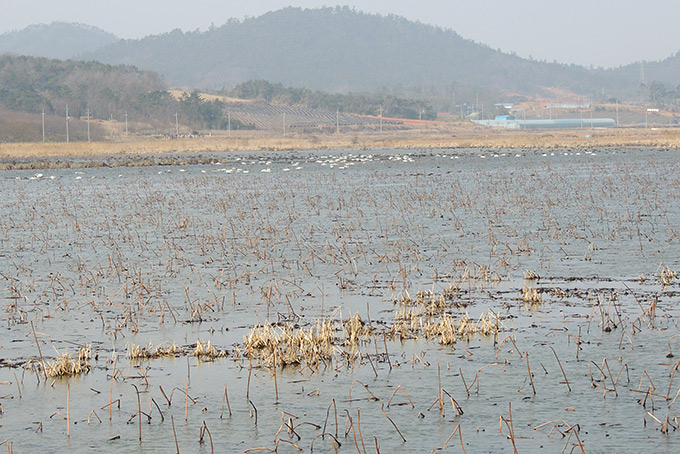
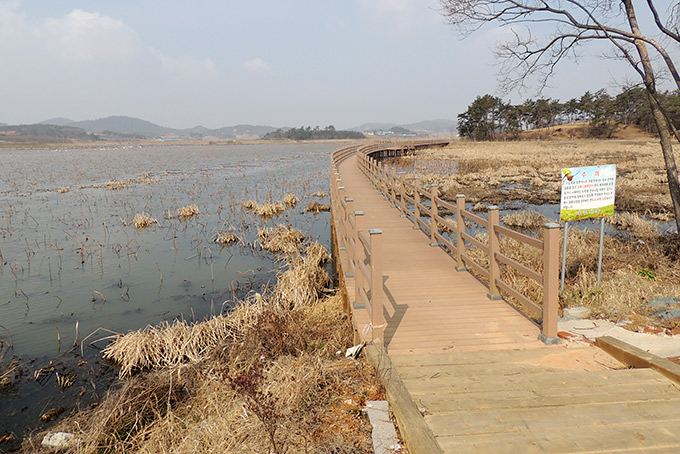
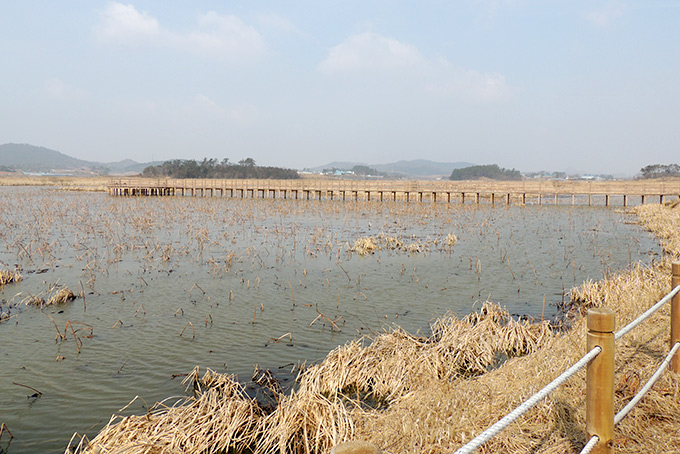
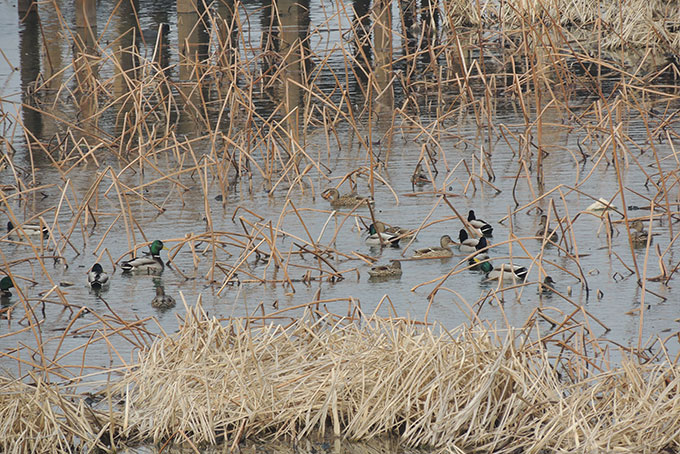
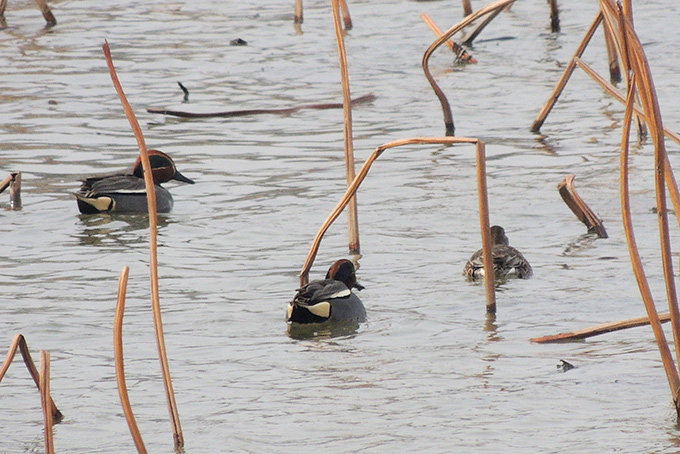
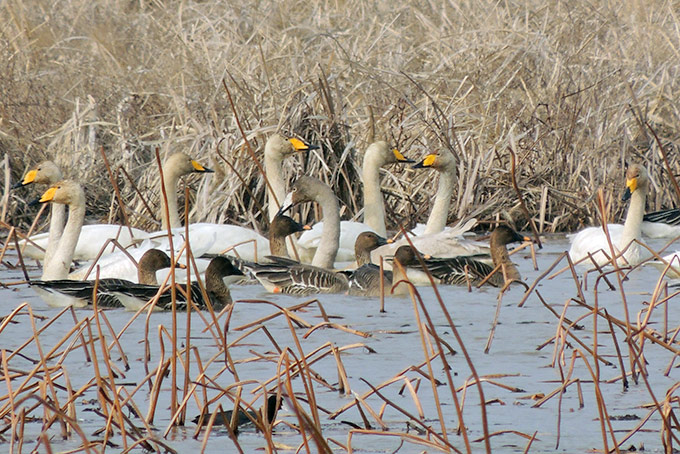
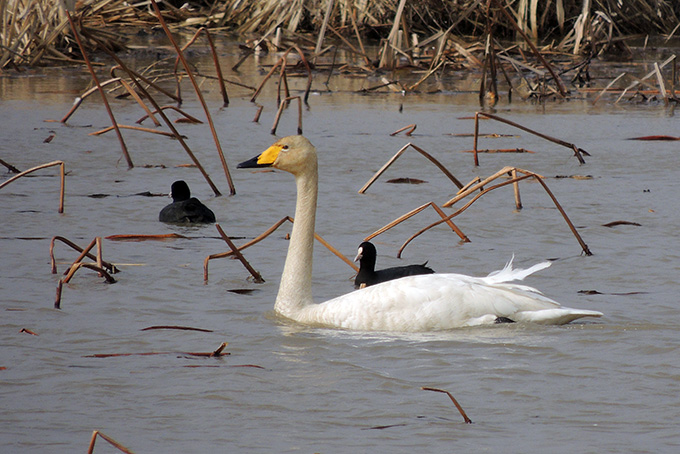
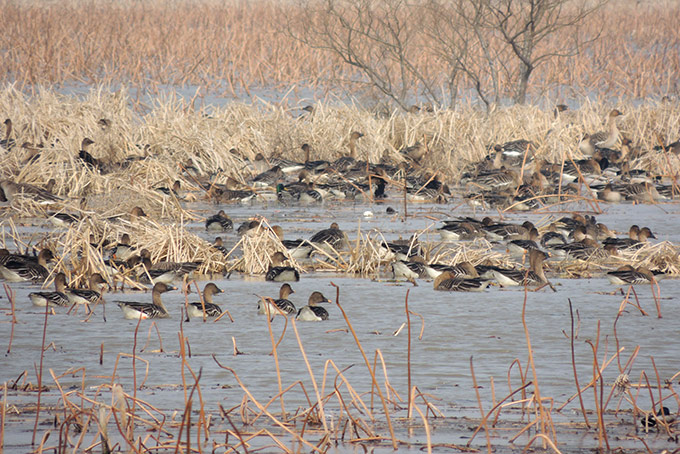
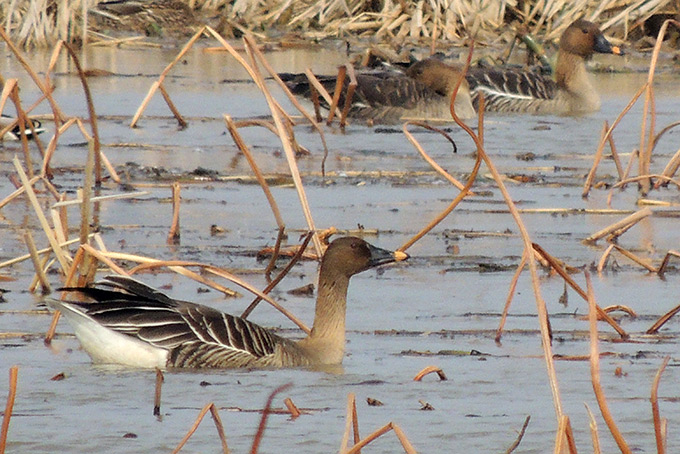
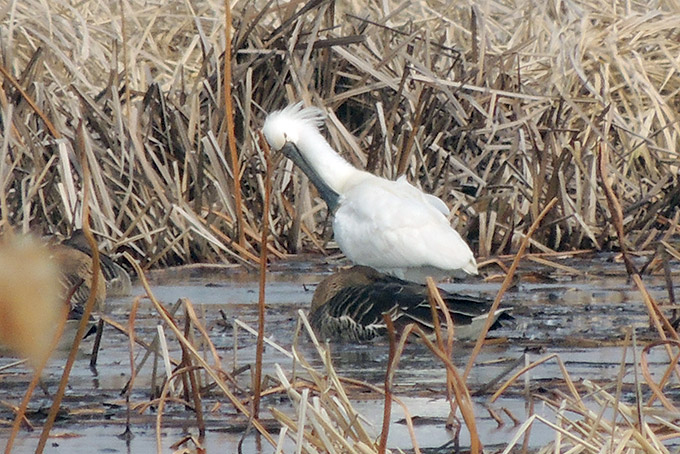
Gangseo, February 9
At the marsh park today I finally tracked down Koreas first Black-winged Kite, which was being stalked by twenty or so twitchers. It seems to have no problem coping with the very cold temperatures, catching and devouring two mice in as many hours.
Also in the area, a singing Long-tailed Rosefinch and Rough-legged Buzzard, demonstrating that even small areas of preserved habitat can be greatly valuable to biodiversity.
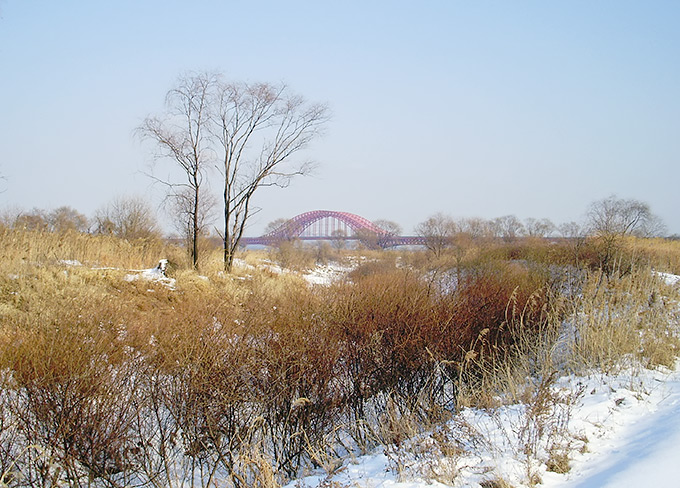
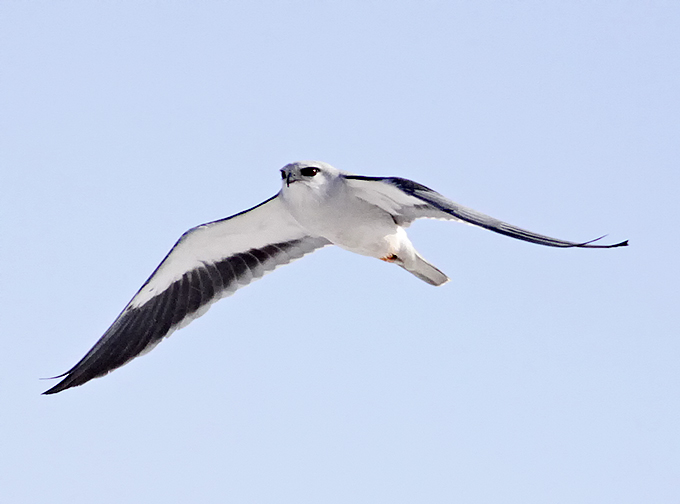
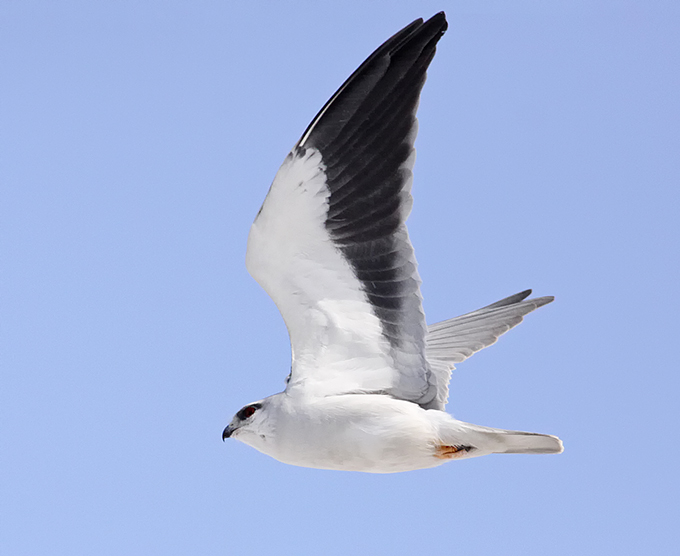
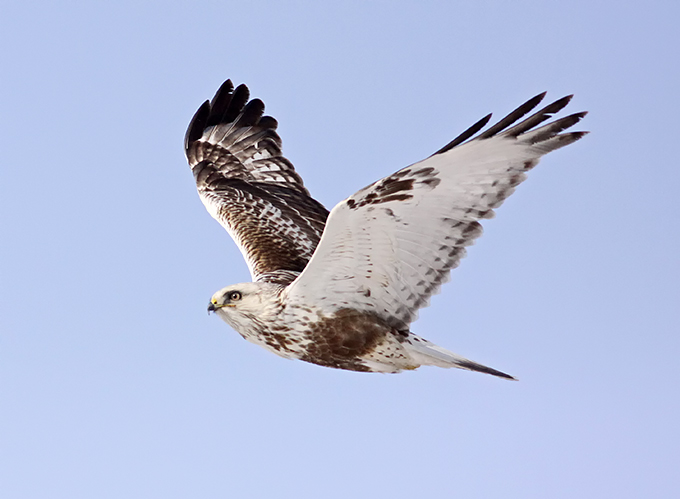
Junam Reservoir, February 8
Was a cold yet pleasantly sunny morning with a temperature of -2°C and a slight breeze. On the way to Junam, in Jinyoung, 5 Cinereous Vultures were soaring above a hill along the back roads. At Junam, most of the lake was frozen but a few Whooper Swans could be seen. 3 White-tailed Sea Eagle sat perched in the trees near the south end while the eastern edge was ice-free, allowing many Northern Shoveler, Falcated Duck, Tufted Duck, Eurasian Teal, hundreds of Common Pochard (in the late afternoon had a good look through these but no Baer’s unfortunately!), Coot, and 50+ Smew to feed. There were some Black-headed Gulls and a line of Eastern Great Egrets on the distant pipeline. On the opposite rice fields were a flock of 200+ Greater White-fronted Geese and an Eastern Buzzard.
Moving on to Dongpan, with little ice on the water, there were several Whooper Swan, some distant Eastern Taiga Bean Geese, a few Falcated Duck, a few Common Pochard, Tufted Duck, many Spot-billed Duck, a few Eurasian Teal.
I kept an extra eye on Bean Geese. You can read about Eastern Taiga Bean and Tundra Bean Geese here: http://www.birdskorea.org/Birds/Miscellaneous/BK-BM-Eastern-Taiga-Bean-Goose.shtml
At the wooded area, many Yellow-throated Bunting, a few Rustic Bunting, some Long-tailed Tit, Eastern Great Tit, Grey-headed Woodpecker, Japanese Pygmy Woodpecker, 20-30 Goldcrest in the pine, a small group of 10 Brambling, and most impressive was a stunning Siberian Accentor foraging in the scrub. Pale Thrush were also about, as were Dusky and Naumann’s Thrush. Paid particularly close attention to these latter thrushes in hopes of finding something out of the usual. Many Dusky and at least five Naumann’s were observed throughout the day.
In the rice fields near Dongpan, 900+ Greater White-fronted Geese, 8 White-naped Cranes, about a dozen Northern Lapwing, some Far Eastern Skylark, the occasional Bull-headed Shrike, two Eastern Buzzard, two Northern Goshawk, two Eurasian Kestrel and a Cinereous Vulture in the sky.
Before departing, had one last peak at Junam in the early afternoon. Winds picked up but the temperature was up to 2°C. There few visitors, so there were several large flocks of Greater-white Fronted Goose dispersed throughout the close-by rice fields. One of these flocks included 5 Swan Goose. Hundreds of ducks were on the unfrozen parts of the lake, mostly Mallard, Northern Pintail, and Smew. Joining the Whooper Swan on the water were some Greater White-fronted Goose, Eastern Taiga Bean Goose, and 6 more Swan Goose. A Hoopoe and at least a dozen White-cheeked Starling could be found on their usual patch. Besides the many great views of Dusky Thrush, the most exciting bird was a Japanese Quail accidentally flushed when looking through the geese for Lessers.
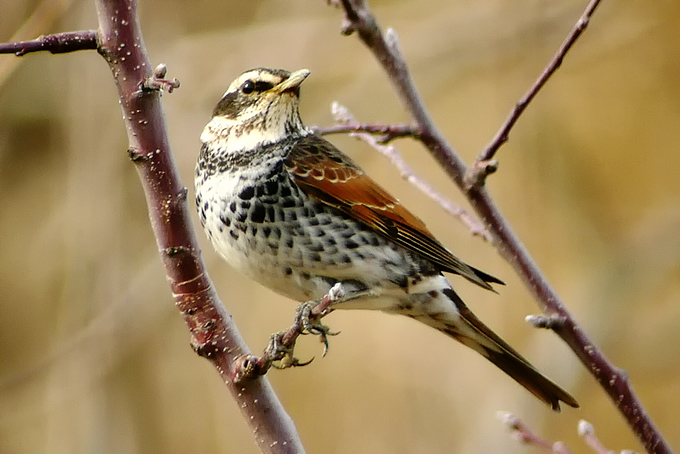
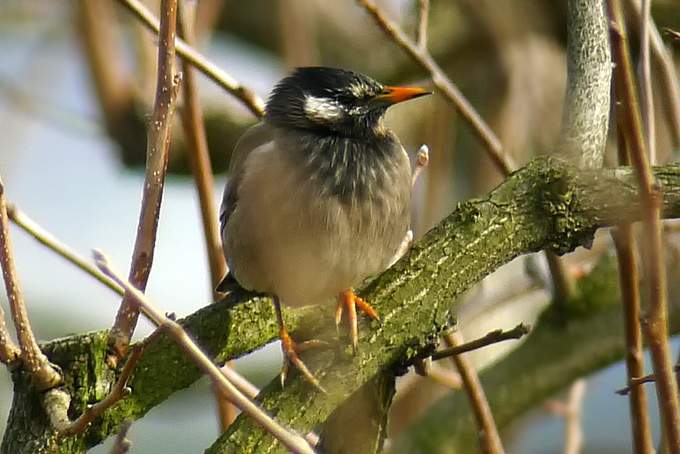
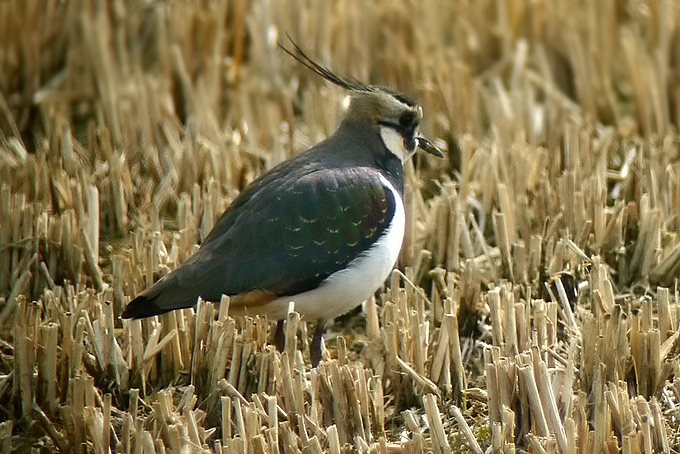
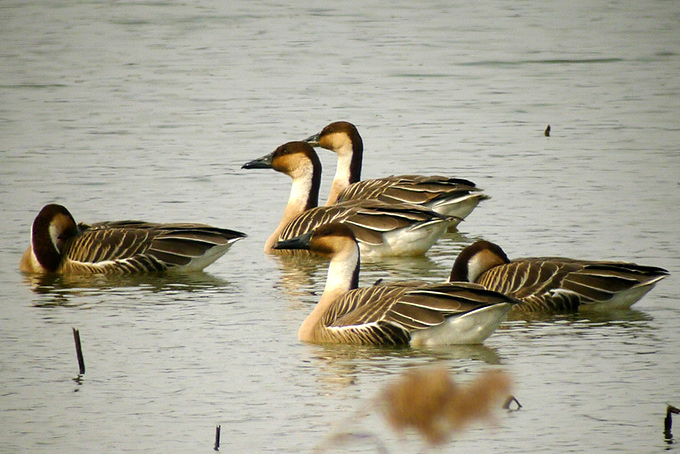
Ganseo, West Seoul/Gyeongii, February 5
Following news breaking on February 4th of Korea’s first Black-winged Kite Elanus caeruleus, a short trip to Ganseo Eco-Park on the southern bank of the Han River under overcast skies with light snow flurries. Decent views of this raptor (including brief views of the underwing) appear to support the identification that has already been made by other observers (helping to rule out the much less likely Australian Black-shouldered Kite and North American White-tailed Kite). Unfortunately, the bird’s flight was too rapid and the conditions much too murky to allow (me to take) digiscope images of the underwing.
Although this southern-distributed species has been recorded as far north as Hebei Province in China, the timing and location of this first national record (apparently from February 2nd) seems extraordinary in many ways. This bird was found next to a busy highway, close to the nation’s capital city, and in the depth of winter (albeit coincident with a milder spell of above-freezing temperatures). During approximately one-hour of broken observations on 5th, the Black-winged Kite was seen to catch and consume only one small rodent – nonetheless quite an achievement as much of the area was covered by 10cm or more of snow! Also present at the same site were single Eastern Buzzard and Eurasian Kestrel and several Long-tailed Rosefinch and Black-faced Bunting. Nearby, en route to the subway station as the snow started to fall a little more heavily (heralding the start of a week of much more severe cold), one or more Japanese White-eye (heard only) also seemed out-of-place. However, according to Dr. Shim Kyu-Sik this “southern species” has apparently been increasingly recorded in the north-west of the country in the past few years.
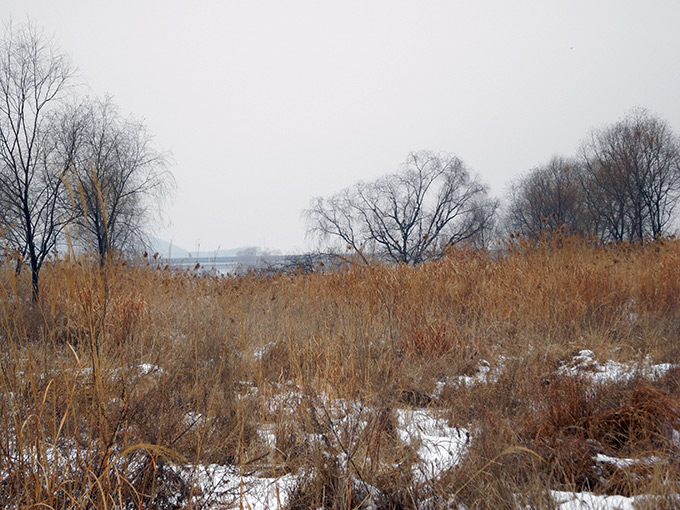
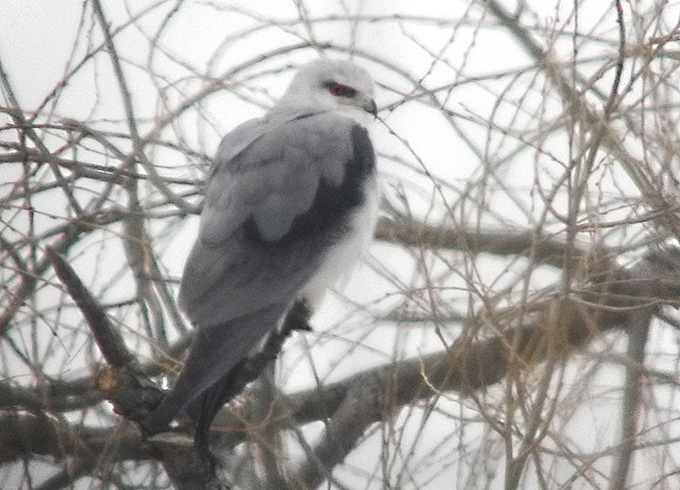
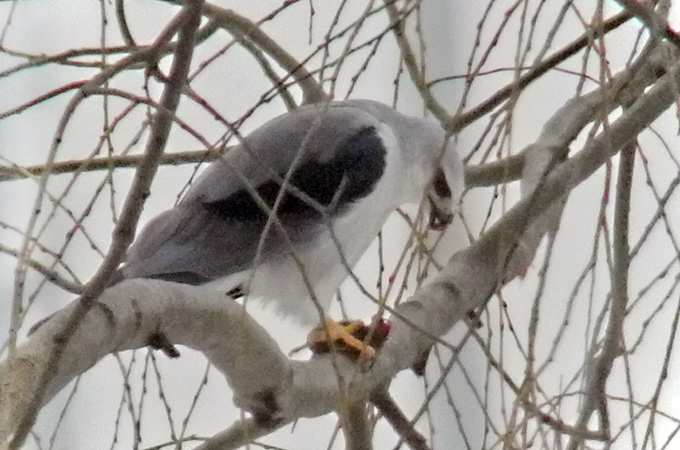

North-east Coast, February 4
After overnight snow, there were long sunny periods and mild conditions (maximum of 7C) along the Gangwon Coast. Three exceptional highlights this day included a Bearded Vulture Gypaetus barbatus, an adult American Herring Gull (at Geojin) and the now long-staying Bufflehead (on a lake in Sokcho).
The Bearded Vulture was first reported (apparently by Park Jin Yeon) on or around January 30th, and was later re-found by several experienced observers (including Dr. Shim Kyu-Sik on February 3rd), together with several Cinereous Vulture, three or more White-tailed Eagle and on the 3rd a First-winter Steller’s Sea Eagle. A visit to the same area on 4th resulted in excellent flight views of 15 Cinereous Vulture and of the juvenile Bearded Vulture – believed to be the first reported on the Korean Peninsula since the three cited in Austin’s 1948 review of the Korean avifauna. According to Austin all three previous records were from the east coast, once in Nam Hamgyong Province (in 1912) and twice in Ganwon (on December 21st 1916 and January 6th 1918). As the location for the two Gangwon records seems to be unclear (and could perhaps be within either modern-day DPR Korea or within the ROK), this is perhaps the first national record of the species. Director Park Joo-Hyun (director of the leading website BirdDB, at http://birddb.com/birdpapa) was present at the same time as us, and has very generously provided us with two much better images of the vulture which we will be posting later.
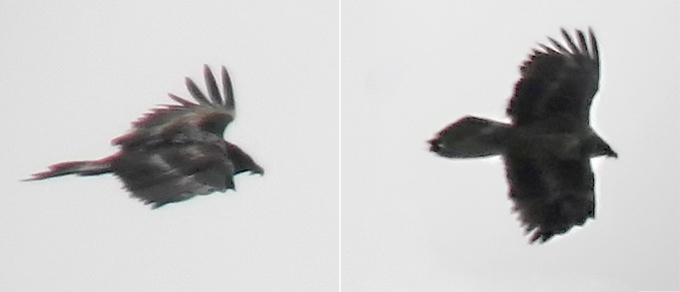
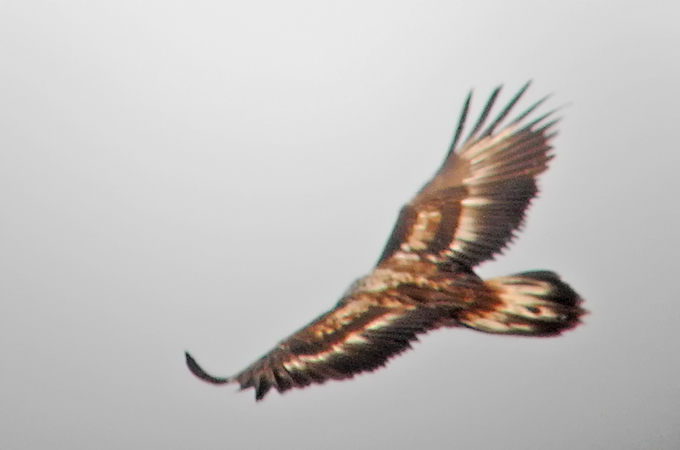
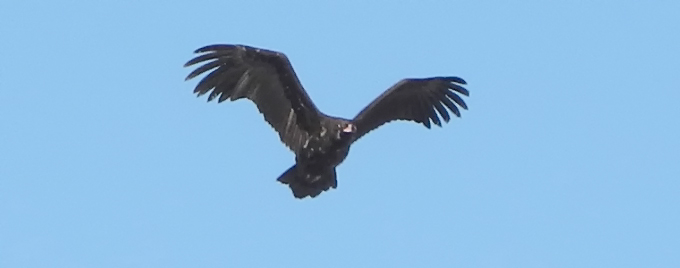
At Geojin, a check of the gulls then found two Glaucous-winged and an adult American Herring Gull - the latter species identified on the basis of its pale blue-grey saddle (obvious in direct comparison with Vega Gull; its pale, clean eye and yellow-orange eye-ring; its orangey gonys spot (with faint dark markings); the tone and type of head markings; and to some degree on its primary pattern.
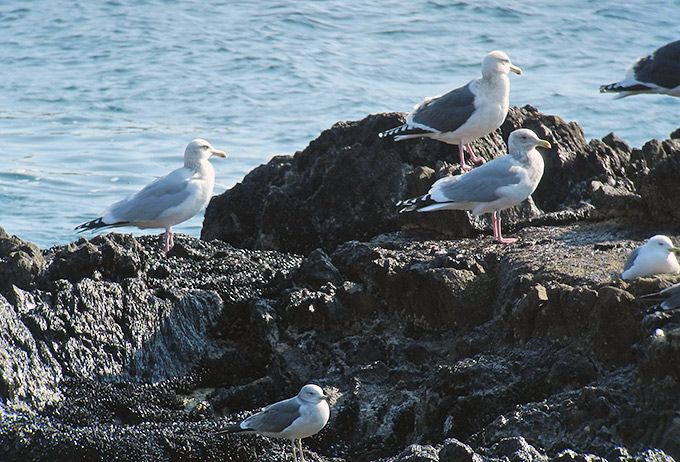
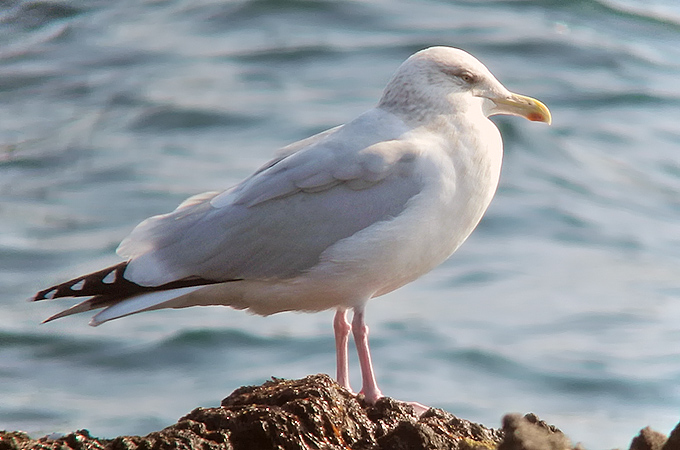
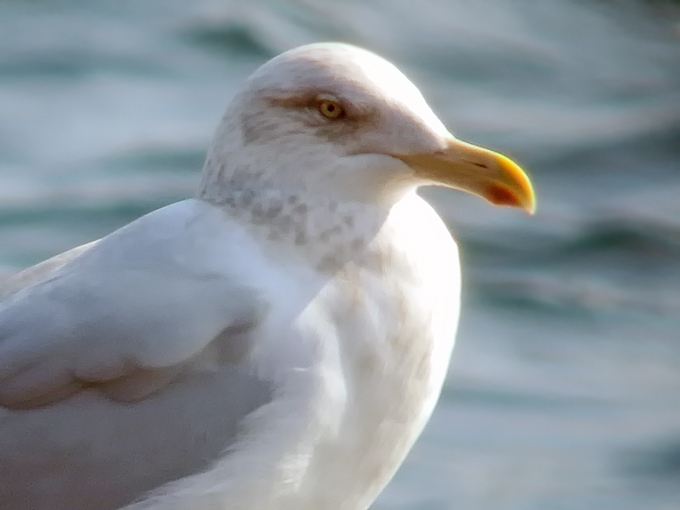
The afternoon then ended at Sokcho, where the Bufflehead continued to display to a group of ducks including several Common Goldeneye and Greater Scaup.
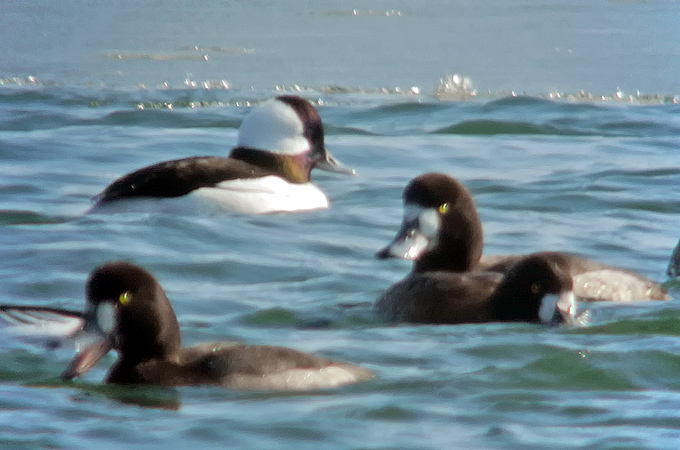
Seolleung, February 2
Having a late start, the early afternoon sky was clear and winds seemed low. It was a typical day at Junam, with several flocks of Greater White-fronted Geese (300+) scattered about the rice fields mixed with Whooper Swan , Mallard, Spot-billed Duck, and Northern Pintail . Three groups of White-naped Cranes (18) flew over and continued on passed Junam. At the main area, our first impression was how busy it was so close to the reservoir. Hundreds of visitors filled the street and main path walking, cycling, and running. While scanning the lake, another flock of White-naped Cranes (22) flew over. Still, I wondered where most of the birds had gone. There were only a few swan feeding, some egrets, and a distant Smew. The wind had picked up, the water level seemed high, and there was a White-tailed Sea Eagle (juv.) perched at the southern edge of Junam, so perhaps that had something to do with it. But then suddenly on the main road a group of seven or so horseback riders galloped by swiftly and noisily, turning heads and bringing up the entire flock of feeding birds (close to a thousand) opposite the lake. The birds then circled frantically above, some coming down on the lake, some leaving the reservoir.
Education signs posted around the reservoir warning of the impact of disturbance on migratory birds could be really useful, especially with so many visitors.
We decided to leave and bird the surrounding areas. We then found the usual Dusky Thrush, Naumann’s Thrush, White-cheeked Starling, Bull-headed Shrike, a few Buff-bellied Pipit, a Great-spotted Woodpecker, Yellow-throated Buntings, Great Tits, and a few flocks of Far Eastern Skylark. Birds of note were 2 Eurasian Hoopoe, and a Japanese Waxwing. Navigating around the lake we found where perhaps many of the birds had gone to duck away from the crowds. There were more than a hundred White-naped Cranes, some Whooper Swan, Taiga Bean Geese, Common Pochard, some Falcated Duck, about two dozen Eurasian Spoonbill, and Smew. We observed quietly from a distance and then as the sun went down, the cranes took flight. On our way home to Gimhae, two more White-tailed Sea Eagle were observed.
Seolleung, February 2
Very birdy at Seolleungneung today, with a surprising number of Varied Tit, a White-backed Woodpecker, Eurasian Treecreeper, 8 Pallas's Rosefinch and several Naumann's Thrush.
Also present were e.g. a Ring-necked Pheasant, Eurasian Nuthatch, Grey-headed and Japanese Pygmy Woodpeckers
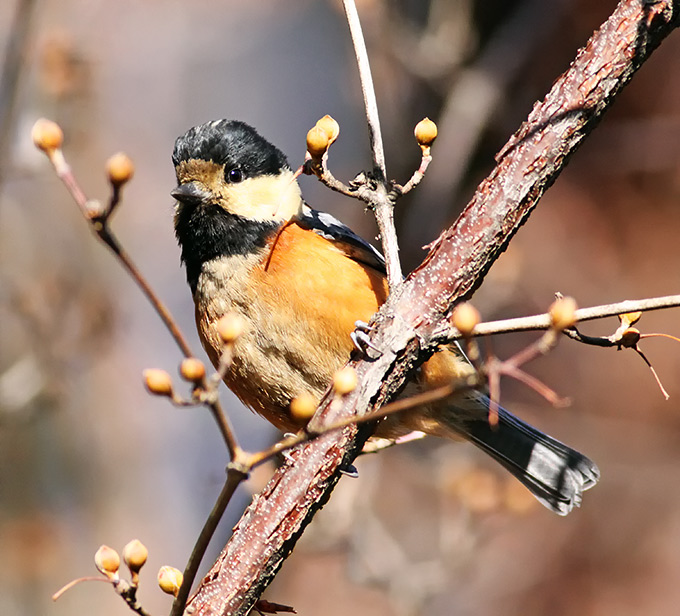

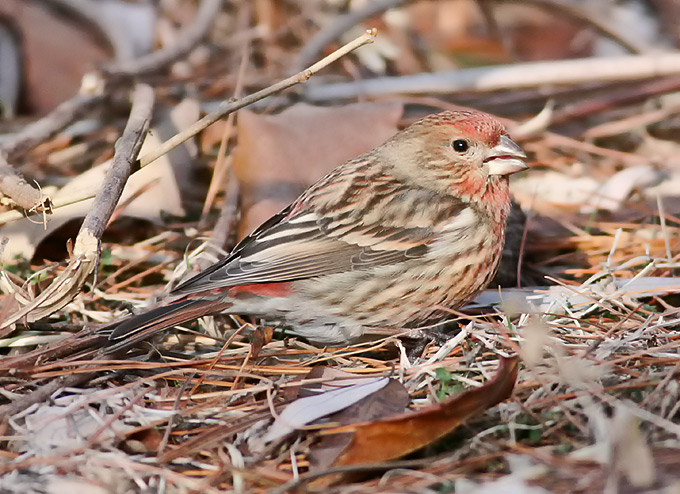
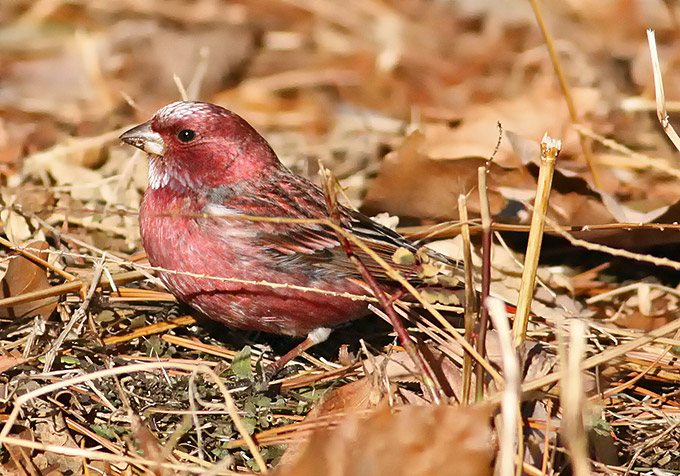
Olympic Park, February 2
My quest for waxwings continues, and so does the failure to locate them! The only bird of note at the Seoul Olympic Park were a couple of Treecreepers. I spent some time scanning each and every thrush I encountered but all of them turned out to be either a Naumann’s or a Dusky. I also had a split second view of a thrush in flight with clear underparts and light streaking on the flanks. Though there has been sightings and photographs of a Red-throated Thrush there, the view was too brief to make a conclusion. Its worth noting that I was not the only person in search of waxwings. Close to a dozen supertelephoto lenses were pointed at the berry trees where the birds are likely to feed but after a long wait most of them packed up and headed elsewhere. A rather poor day with only about 30 species.
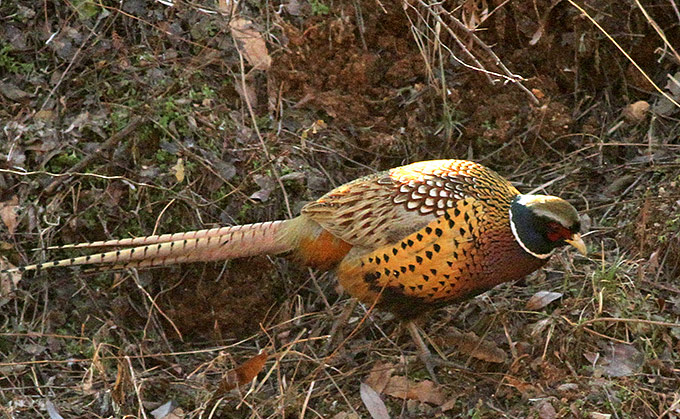
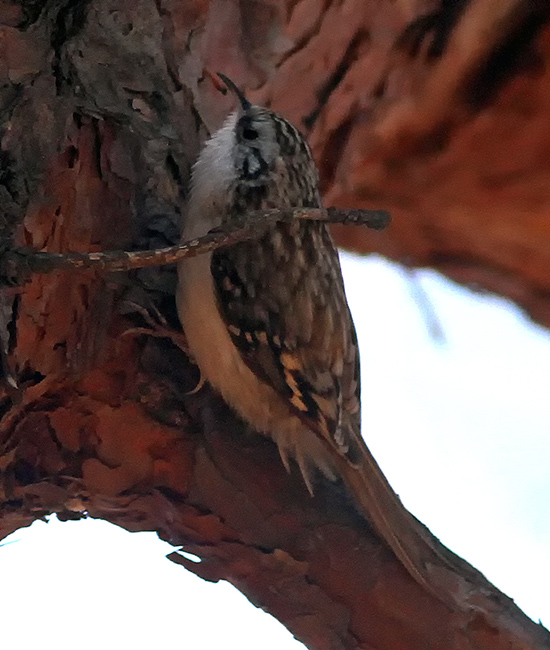
Birds Korea 1108 Ho, 3 Dong, Samick Tower Apt., 148-22, Namcheon-Dong, Su-Young-Gu
Busan, 618-762 Republic of Korea





